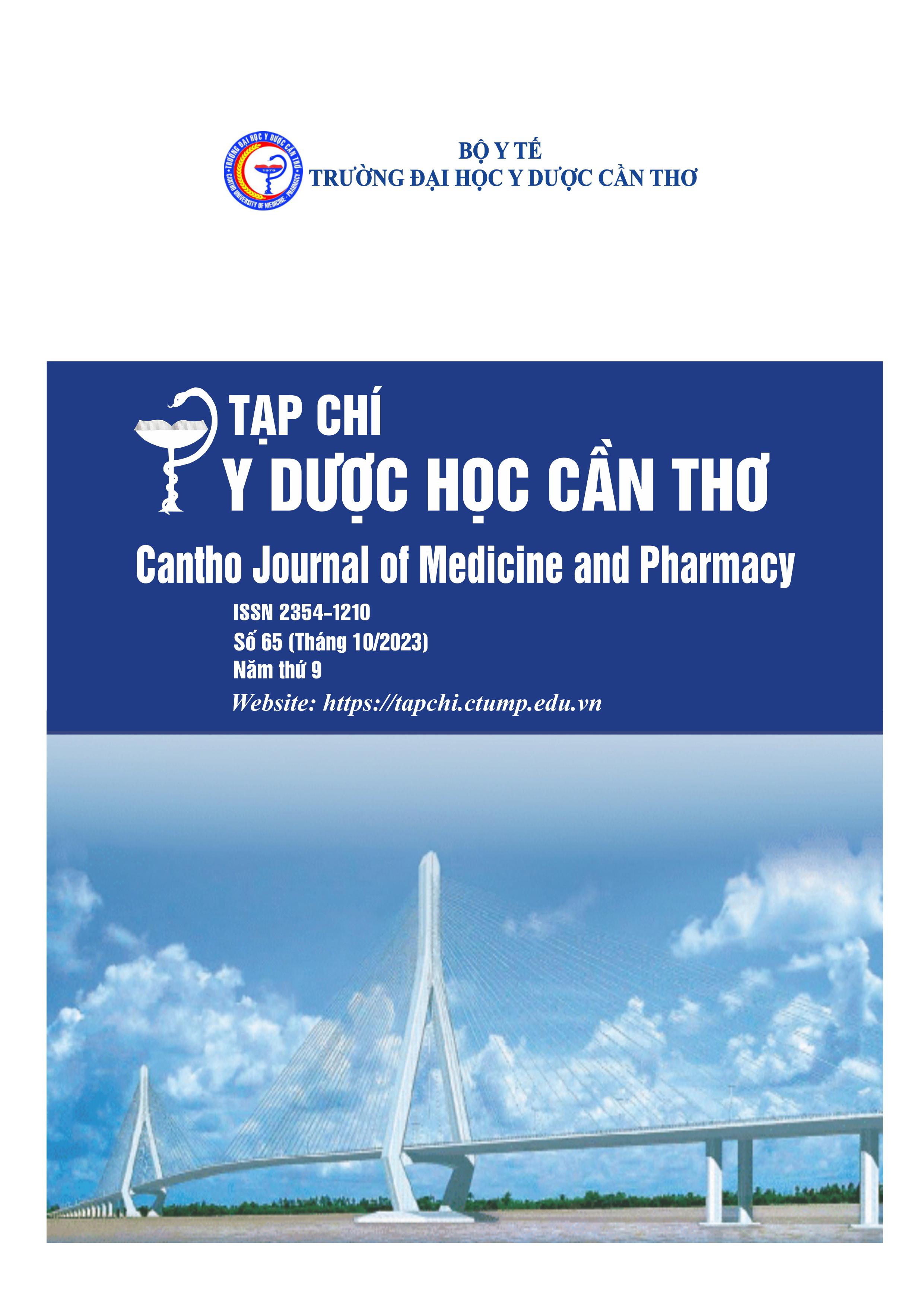COMPUTED TOMOGRAPHY CHARACTERISTICS OF ALIMENTARY TRACT PERFORATION CAUSED BY FOREIGN BODIES AT HOAN MY SAI GON HOSPITAL
Main Article Content
Abstract
Background: Alimentary tract perforation caused by foreign bodies is an uncommon emergency surgery; its clinical manifestations are so diverse that the correct clinical diagnosis is rarely made. Computed tomography is the most efficient detection and preoperative management tool. Objectives: Describing the Computed tomography characteristics of foreign bodies that cause alimentary perforation. Describing the valuation of imaging characteristics in detecting the perforation location due to the foreign bodies. Materials and methods: All patients who underwent surgery or endoscopy to remove foreign bodies causing alimentary perforation between January 2020 and July 2022 at Hoan My Sai Gon Hospital were retrospectively reviewed. All patients had Computed tomography with DICOM standard. Results: In 30 reviewed patients, the age group above 40 took the first place with 70%. All the patients had a perforation in gastrointestinal tracts and 40% of them were first diagnosed not emergency surgery. Only 23.3% had the diagnosis of foreign bodies before surgery. The common foreign bodies were fishbone (83.3%). The sensitivity in detecting FBs of abdominal ultrasound, conventional X-rays, and Computed tomography were 8.7%, 33%, and 100% respectively. Localized extraluminal air when combined with focal wall defect would elevate the accuracy for perforation site up to 94.4% for positive predictive value (PPV) and 83.3% for Specific (Sp). Conclusion: Alimentary tract perforation caused by FBs is uncommon but it has a large variety of clinical manifestations. Computed tomography is dominant to X-rays and Abdominal ultrasound for diagnosing foreign bodies and perforation site detection.
Article Details
Keywords
Foreign body (FB), gastrointestinal perforation caused by foreign bodies
References
10.1148/rg.233025137.
2. Tôn Long Hoàng Thân, Võ Tấn Đức, Nguyễn Thị Phương Loan. Đặc điểm hình ảnh Xquang cắt lớp vi tính của thủng đường tiêu hóa do dị vật. Tạp chí Y học Thành phố Hồ Chí Minh. 2019. 23 (1), 120-125.
3. Chữ Ngọc Bình, Đặng Hanh Biên. Đánh giá kết quả điều trị dị vật đường ăn tại Bệnh viện Việt Nam-Cu ba từ 1/2004-6/2008. Tạp chí Tai Mũi Họng. 2008. 4(8), 23-26.
4. Trần Phương Nam, Nguyễn Tư Thế. Nghiên cứu đặc điểm lâm sàng và kết quả điều trị dị vật thực quản tại bệnh viện Trung ương Huế. Trường Đại học Y Dược Huế. 2009. 34-36.
5. Goh B., Chow P., Quah H., Ong H.S, Eu K., et al. Perforation of the gastrointestinal tract secondary to ingestion of foreign bodies. World J Surg. 2006. 30 (3), 372-7, DOI:10.1007/s00268-005-0490-2.
6. Coulier B., Tancredi M., Ramboux A. Spiral CT, and multidetector-row CT diagnosis of perforation of the small intestine caused by ingested foreign bodies. Eur Radiol. 2014. 14, 19181925, DOI: 10.1007/s00330-004-2430-1.
7. Ma J., Kang D.K., Bae I.I., Park K.J., Sun J.S. Value of MDCT in diagnosis and management of esophageal sharp or pointed foreign bodies according to level of esophagus. AJR Am J Roentgenol. 2013. 201 (5), W707-11, DOI:10.2214/AJR.12.8517.
8. Carvalho R., Martins I., Pereira I., Lopes I., Pacheco H., et al. MDCT findings in gastrointestinal perforation caused by ingested dietary foreign bodies. European Congress of Radiology. 2015, C-2177, Doi:10.1594/ecr2015/C-2177.


